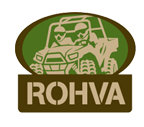The Recreational Off-Highway Vehicle Association Promotes Safe Driving Tips for Memorial Day Weekend
May 25, 2011Recreational Off-Highway Vehicle Association Continues Pioneering Work In Support of Consensus Standards and Occupant Safety
October 17, 2011IRVINE, Calif., June 30,2011 – While enjoying their freedom to explore trails, deserts and public lands this long Fourth of July weekend, recreational off-highway vehicle enthusiasts need to be safe and responsible while having all that fun.
Dangerous behavior, clearly discouraged in operator manuals, was a factor in 98 percent of ROV crashes, according to a recent study. Stunting, driving too fast, driving on paved roads, using alcohol or drugs, improper seating of passengers, and refusal to wear helmets and use seat belts were among key reasons for unnecessary injuries. Age was another factor. Some 23 percent of the crashes involved children, and the Recreational Off-Highway Vehicle Association says that no one under 16 or without a driver’s license should drive an ROV.
“It’s great that we all have the freedom to explore the country’s trails and dunes behind the wheel of an ROV,” said Paul Vitrano, ROHVA executive vice president. “But we call on the thousands of Americans enjoying this emerging pastime to drive responsibly, safely and take the best possible care of their family, friends and the land as well.”
Important safety tips and the right way to treat the environment can find be found online at www.rohva.org.
ROHVA wants enthusiasts to follow its important ROV Safety Rules and help ensure the safety of drivers, passengers and everyone else off-road.
- Always wear a helmet and other protective gear, use the seat belts, and keep all parts of your body inside the ROV.
- Never drive on paved roads, except to cross, when done safely and permitted by law. ROVs are designed to be operated off-highway.
- Drive only in designated areas, at a safe speed, and use care when turning and crossing slopes.
- Never drive under the influence of alcohol or other drugs.
- Never drive an ROV unless you’re 16 or older or have a driver’s license. ROVs are not toys.
- Never carry more passengers than the ROV is designed for, and never allow a passenger who is too small to sit in a passenger seat to ride in the ROV.
- Read and follow the operator’s manual and warning labels.
Sometimes referred to as side-by-sides or utility terrain vehicles (UTVs), ROVs are motorized off-road vehicles designed to travel on four or more non-highway tires, with a steering wheel, non-straddle seating, seat belts, an occupant-protective structure, and engine displacement up to 1,000cc. Current models are designed with seats for a driver and one or more passengers. ROVs are used for a variety of outdoor recreational activities as well as many work applications.
The Recreational Off-Highway Vehicle Association is a national industry organization that promotes the safe and responsible use of ROVs. ROHVA is accredited by the American National Standards Institute (ANSI) to develop equipment, configuration and performance standards. Based in Irvine, Calif., the not-for-profit association is sponsored by Arctic Cat, BRP, Kawasaki, Polaris and Yamaha. For more information visit www.rohva.org.

